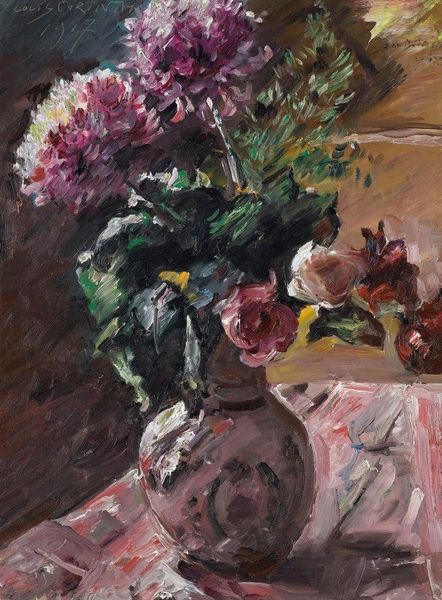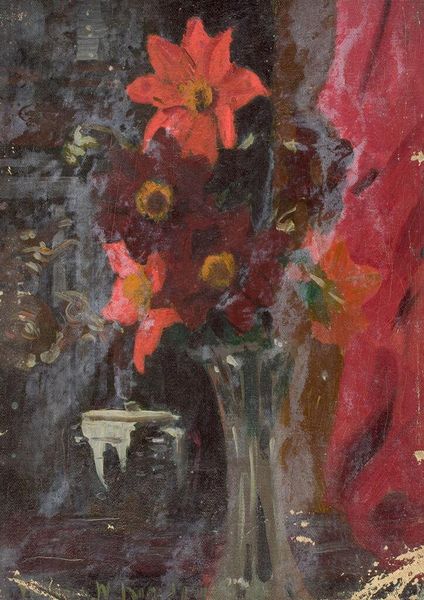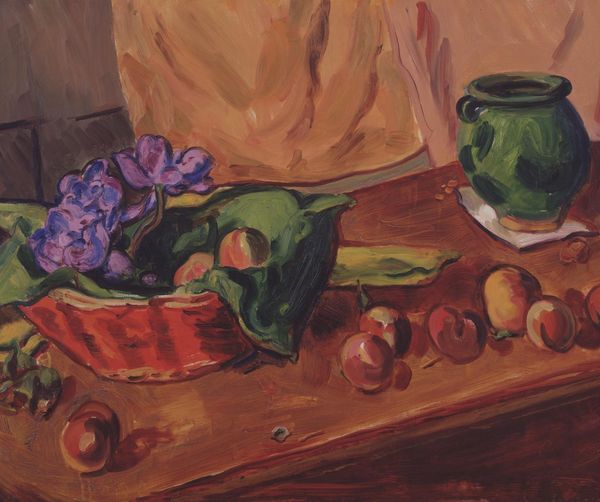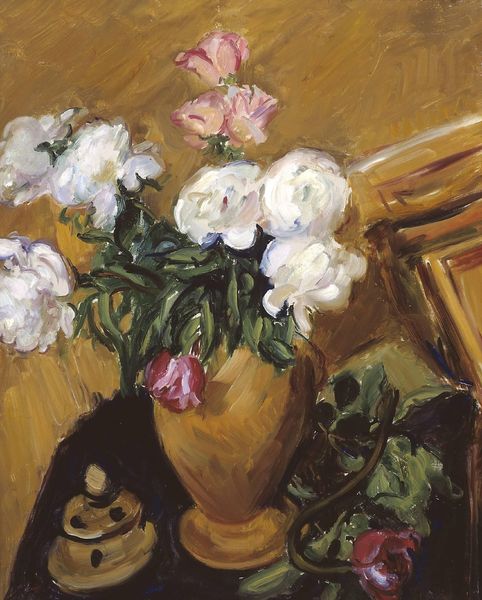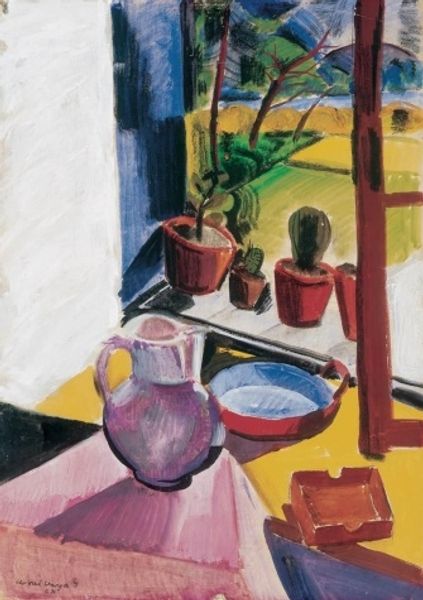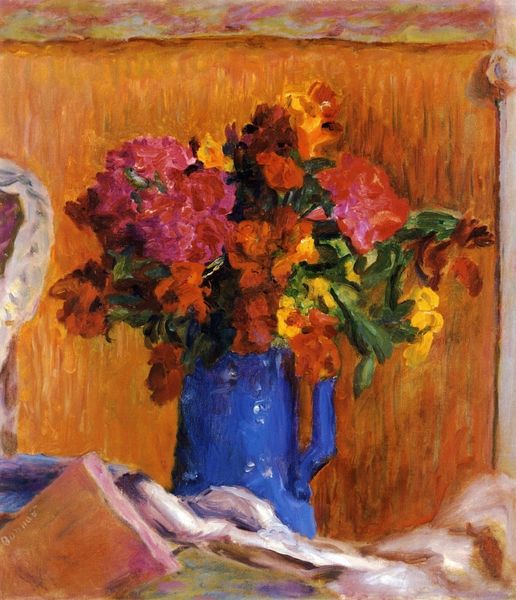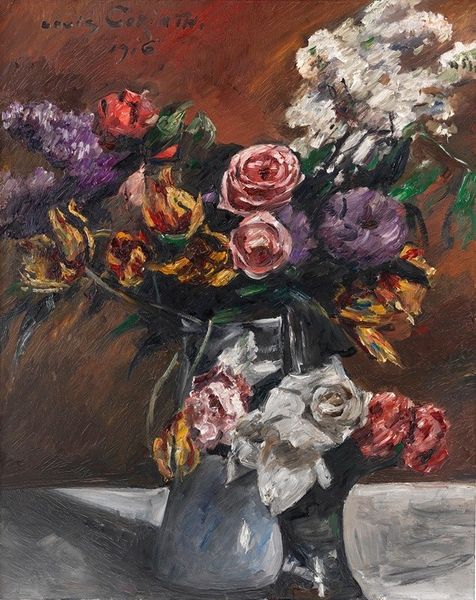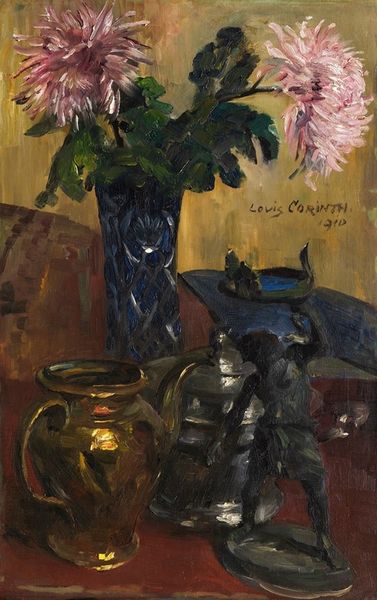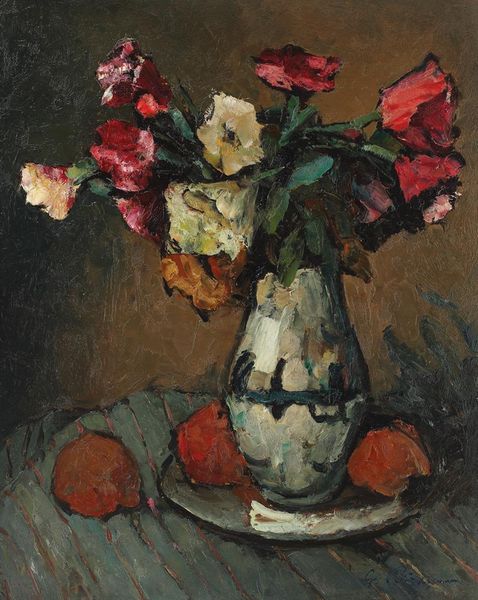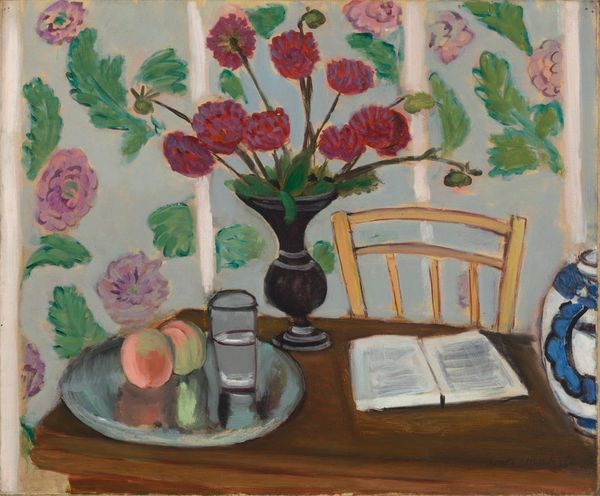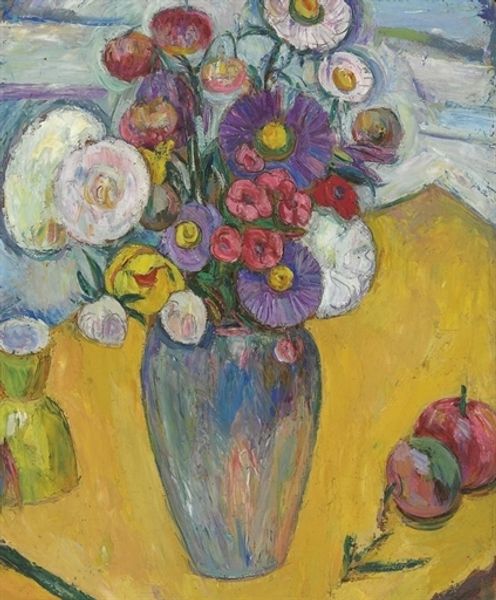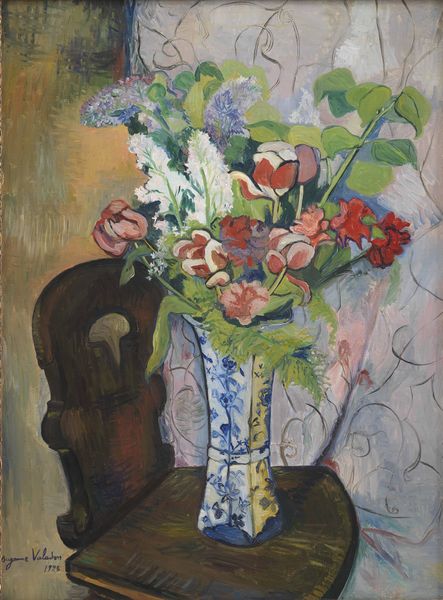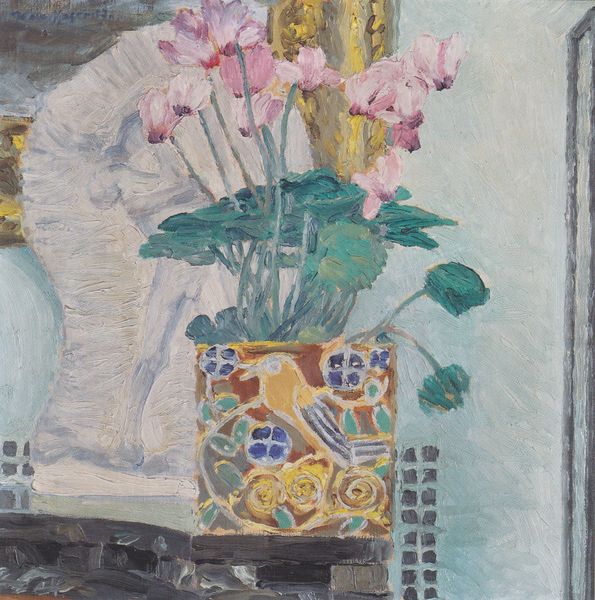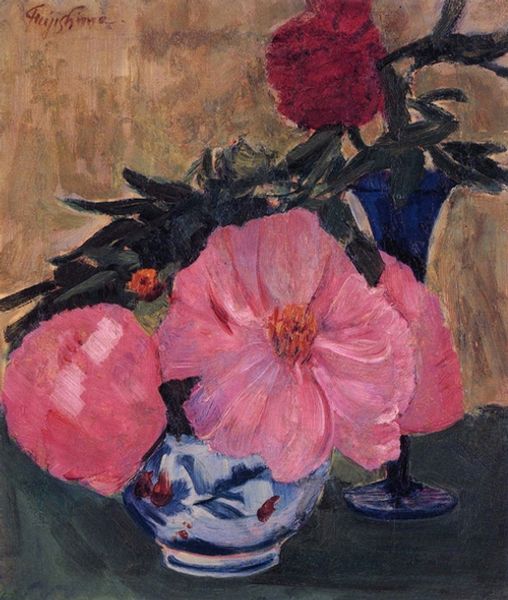
painting, oil-paint, impasto
#
still-life
#
painting
#
oil-paint
#
flower
#
oil painting
#
impasto
#
painting art
#
post-impressionism
Copyright: Public domain
Editor: So, this is "Artichoke" by Fujishima Takeji. There's no date on it, and it’s done in oil paint with an impasto technique. I find the composition really striking – almost confrontational – with the artichokes sticking out like that. What do you make of it? Curator: The artichoke, rendered with such deliberate texture and slightly unconventional color choices for a still life, feels almost defiant, doesn't it? Think of the thistle, which is visually quite similar. In Celtic and other northern European cultures, the thistle, often seen as a weed, becomes a symbol of nobility, resilience, even pain. Do you see how the spiky nature could lend itself to these symbolic readings? Editor: That's fascinating! I hadn't considered the connection to the thistle. It does give the painting a different dimension, more than just a pretty flower arrangement. Curator: Precisely! And consider the book placed so prominently in the lower corner. Is it merely a compositional element, or does it symbolize something more? Perhaps knowledge, secrets, or even the artist's own reflections on the natural world? Fujishima, influenced by post-impressionism, often used everyday objects to hint at deeper, more personal narratives. Editor: That makes a lot of sense. So, the "Artichoke" could be about more than just the artichoke itself; it could be a representation of hidden strengths or even a quiet, personal story? Curator: Exactly. It prompts us to consider the weight that seemingly simple objects can carry, culturally and psychologically. Editor: I never would have seen all that without you pointing it out! Curator: That's the beauty of looking at art, isn't it? We each bring our own associations and then, together, we unlock further layers of meaning.
Comments
No comments
Be the first to comment and join the conversation on the ultimate creative platform.
